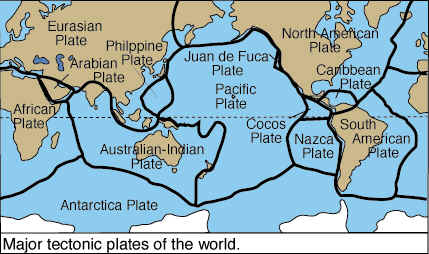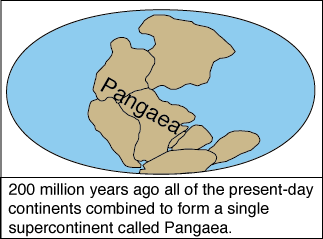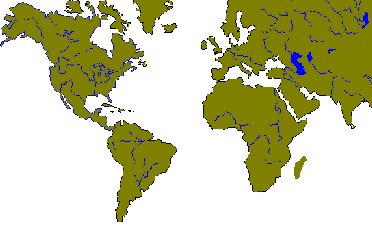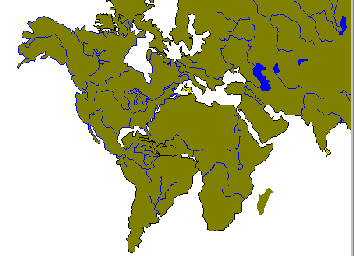Plate Tectonics and Continental DriftIntroductionThe surface of the lithosphere is fractured into a number of tectonic plates (also known as lithospheric or crustal plates) which are in constant motion. As these plates move and collide, the lithosphere buckles, warps, and is torn apart. When this occurs, the Earth's surface shakes with great force, like that which accompanies earthquakes. Volcanoes are common along many plate boundaries as well.
Figure 15.1 Major Tectonic plates of the world Plate TectonicsPlate tectonics refers to the process of plate formation,
movement, and destruction. It finds its foundations in two theories, continental
drift and sea-floor spreading. Continental drift describes the
movements of continents over the Earth's surface. Sea-floor spreading
refers to the creation new oceanic plate material and movement away from the
midocean
ridge. It was Alfred Wegener
Figure 15.2 The supercontinent of Pangea Look at a map of the Earth like that in Figure 15.3. Carefully examine the east coast of South America and then let your eyes drift to the west coast of Africa. It looks like you could "fit" South America up against Africa like a puzzle. The same can be said for the fit between North America, Africa, and Europe (Figure 15.4)
Figure 15.3 Present location of world
land masses
Figure 15.4 Fit of continental land masses When we slide the continents together, some over lap between the land masses occurs. This is possibly due to the creation of exotic terrain, new land that has been formed somewhere else and moved to its present location. This remarkable correspondence provides circumstantial evidence for the theory of continental drift. Watch "Exotic Terrane" then return here. |




